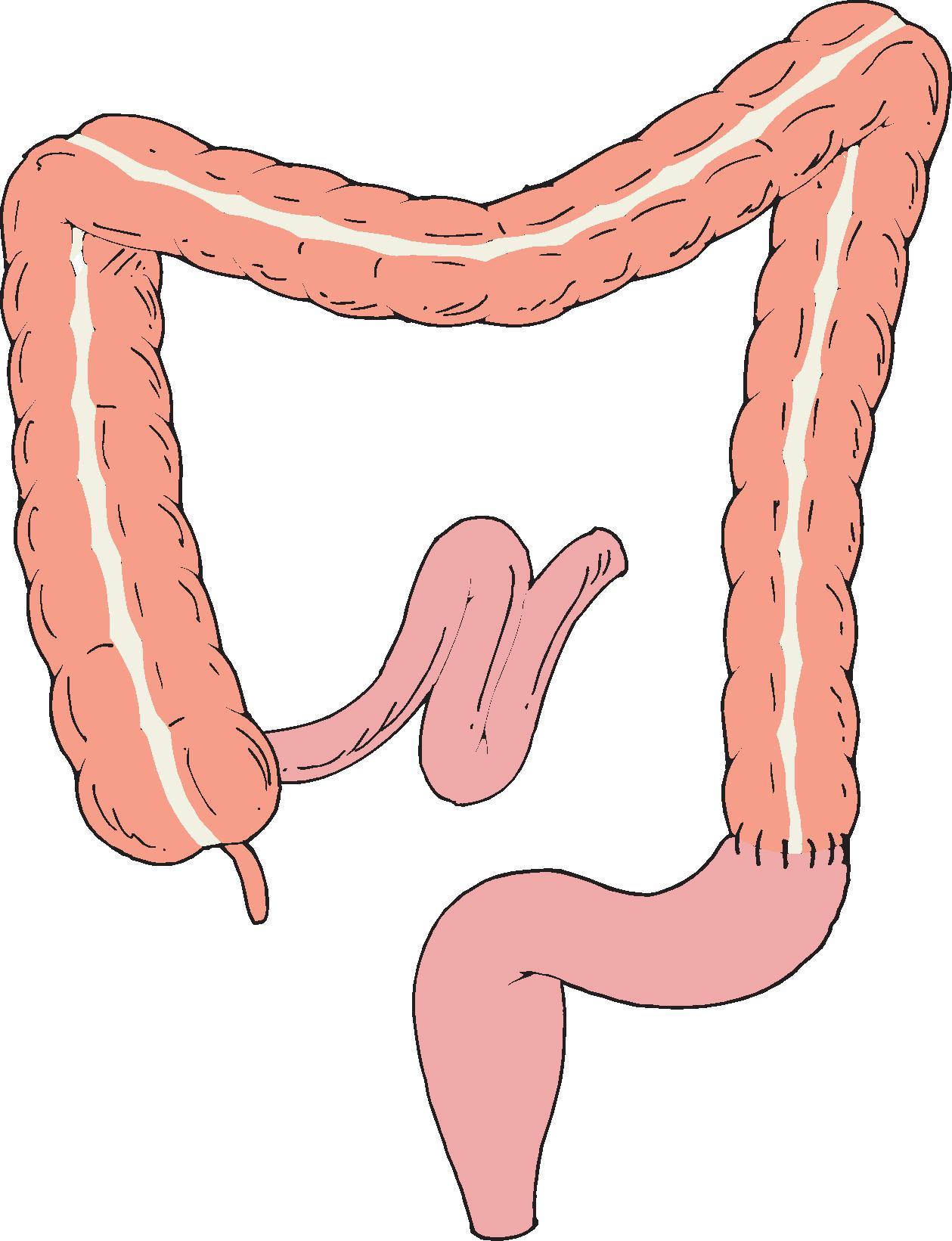Physical Address
304 North Cardinal St.
Dorchester Center, MA 02124
Imaging studies such as water-soluble contrast enemas and computed tomography (CT) are often performed on the postoperative colon to exclude complications such as anastomotic leaks, strictures, fistulas, and abscesses. This chapter discusses the postoperative anatomy and major complications that occur after various forms of colonic surgery.
Segmental resection entails surgical removal of the diseased colonic segment, restoring bowel continuity with an end-to-end, end-to-side, or side-to-side colocolic or ileocolic anastomosis ( Fig. 47.1 ). Most surgeons now use stapling devices rather than traditional hand-sewn anastomoses, creating a uniform ring of anastomotic staples that are readily seen on abdominal radiographs or CT. A segmental resection is frequently performed in conjunction with a temporary upstream diverting ileostomy or colostomy.

A colostomy is a surgical colocutaneous stoma created to decompress a colonic obstruction or to divert the fecal stream from the distal colon. Diverting colostomies are performed to protect a recently created distal anastomosis and allow time for healing or to temporarily bypass a segment of distal colon too inflamed to be resected at surgery.
The creation of a colostomy stoma is associated with a number of complications. Ischemia and necrosis of the stoma may occur if its blood supply is compromised by tension on the stoma. Stomal ulceration may occur because of mechanical irritation from a stomal appliance. The stoma itself may occasionally detach from the abdominal wall and migrate into the abdominal cavity. More commonly, there is antegrade prolapse or intussusception of the colon through the stoma. Other patients develop parastomal hernias containing small bowel or colon that passes through fascial defects abutting the stoma. These hernias are often difficult to detect on physical examination in obese patients but are readily apparent on CT. Parastomal hernias may lead to obstruction, incarceration, or strangulation of bowel.
After a diverting colostomy, the wall of the distal colon not in continuity with the fecal stream can become thickened and nondistensible from diversion colitis. Fluoroscopic contrast studies may show considerable nodularity of the diverted distal colon secondary to lymphoid follicular hyperplasia, possibly as a response to altered bacterial flora. Affected individuals may present with pain, tenesmus, and rectal bleeding or discharge that almost always resolves after colostomy closure and restoration of the fecal stream.
When surgeons create a diverting colostomy above a distal colonic anastomosis, fluoroscopic contrast enemas are often requested to assess the integrity and caliber of the anastomosis before colostomy takedown. The study is performed with a water-soluble contrast agent instilled via a red rubber tube or Foley catheter placed in the rectum. The fluoroscopist should obtain views of the anastomosis fully distended in multiple projections to optimize detection of anastomotic leaks and strictures.
An end colostomy may be performed as a definitive procedure for an unresectable distal colonic or rectal carcinoma or as part of a two-stage procedure for diverticulitis.
A loop colostomy is usually performed to temporarily relieve an acute distal colonic obstruction or protect a new distal colonic anastomosis or to palliate an unresectable obstructing distal colonic tumor. A loop of transverse or sigmoid colon is brought to the abdominal wall with afferent and efferent stomal limbs. If fluoroscopic assessment of either colonic limb is needed, patients usually know which stoma produces feces, so the appropriate limb can be evaluated.
A double-barreled colostomy is created when the colon is completely divided, and the two cut ends are sewn side by side to each other, so the stoma has two openings. This procedure has the advantage of enabling the stoma to be closed without reentering the abdomen.
Become a Clinical Tree membership for Full access and enjoy Unlimited articles
If you are a member. Log in here